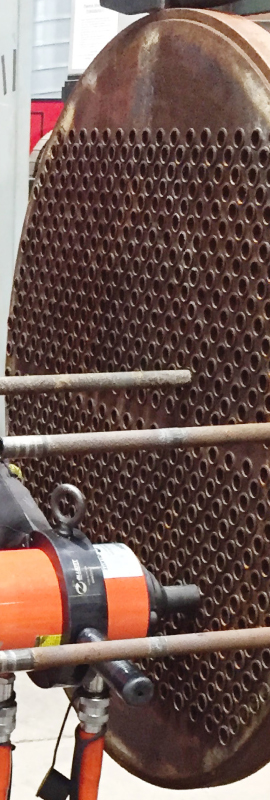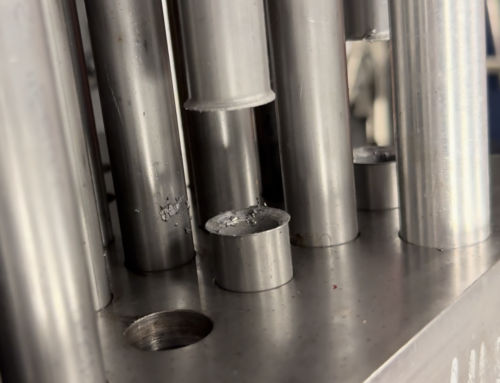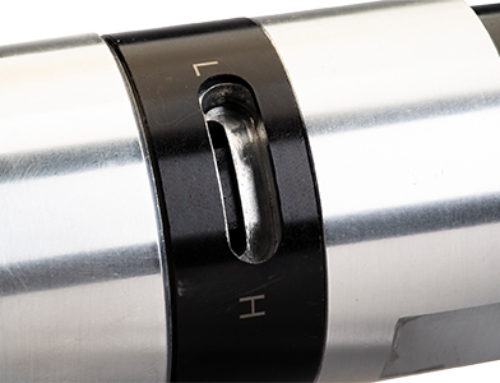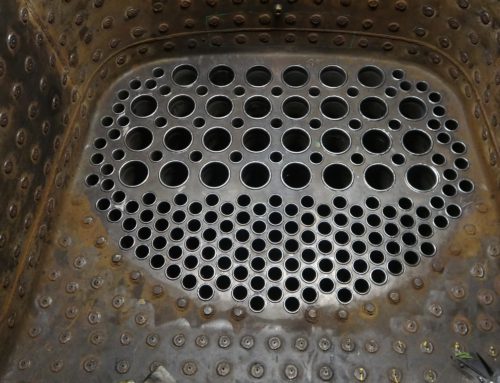3 Tips For Easier Tube Stub Removal
When removing tubes from a vessel, one of the most difficult tasks can be removing tube stubs from the tube sheet. Depending upon how long the tube has been in the vessel, in addition to how efficient the initial expansion was, the removal process can be very difficult. However, there are a few tips & tricks that can make this tedious process easier.
One of the best methods to pull tube stubs is by using a collet style tube puller. This uses a hydraulic cylinder, a drawbar, and a collet to remove tube stubs from the tube sheet. The hydraulic cylinder stroke pulls the drawbar through the collet ID on a taper, causing the jaws of the collet to open and the teeth to bite into the ID of the tube and extract it. This one step tube stub removal process grips, pulls, and releases tube stubs in a matter of seconds, making it a quicker alternative to more traditional methods.
However, in certain applications, it may be necessary to use a stub tugger or pine jenny to pull stubs. In this situation, it is important that best practices are followed to make pulling with a spear quicker and easier.
1. Use an anti-seize compound spear lubricant.
Anti-seize compound lubricants are used to prevent seizing, corroding, stripping, or galling during disassembly and reassembly. When applied to spear pulling teeth, the anti-seize compound prevents the spear and the tube stub from seizing or becoming immobile, allowing for quicker removal. In cases where an anti-seize compound is not utilized, the seizing can be so great that it is almost impossible to pull out the tube stub with a spear, thus lengthening the removal process.
Therefore, not only is the use of anti-seize lubricant important, but also the type of anti-seize utilized. While there are a variety of types of anti-seize lubricants available, the pressure & temperatures they are able to withstand will vary. For example, Elliott P8788 is a nickel-based anti-seize lubricant designed to withstand the high pressure exerted when the teeth dig into the tube wall material. So it is important to evaluate your application and needs before selecting an anti-seize lubricant.
2. Select the correct impact wrench.
When selecting an impact wrench, it is important that it be large enough to keep the spear rotating until it is set. As a result, the torque rating of the impact wrench must be high enough to thread the spear into the tube sufficiently. Using an impact wrench that does not have enough torque will result in an improperly threaded spear. If the spear is improperly threaded, it will not be able to grip the tube stub tight enough to remove it. Rather, it will completely strip out the tube material of the stub.
Additionally, it is recommended that a square drive socket is used to drive the spear, as opposed to a hex type socket. This is because a hex type socket has a tendency to round off the corners of the spear during the driving processes. Whereas, the use of a square drive socket will reduce the likelihood of that occurring.
3. Relieve the tension on the spear’s teeth
After the spear is set, turn the spear ¼-½ counter-clockwise to relieve tension on the pulling teeth. It is important to relieve the tension on the pulling teeth so that the spear can later be removed from the pulled tube. Once the tube has been pulled from the tube sheet, the spear should be unscrewed from the tube. Generally, this requires that the tube be secured in a vice while the spear is unscrewed from the tube. If the tube is not backed off a ¼ – ½ turn when it is installed, it can be very difficult to remove the spear once the tube is out of the sheet.
While some of these tips & tricks may seem like simple solutions, they can make a huge difference in the tube stub removal process. Following anti-seize application best practices can reduce or eliminate the amount of tube material stripping that can occur during removal, making it easier to remove the stub. Additionally, by selecting an impact wrench with a high torque rating, you can increase the rate in which the spear sufficiently grips the tube stub. Not only will this make it easier to pull out the stub, but it will also decrease the amount of time spent trying to insert the spear. Lastly, relieving the tension on the pulling teeth will make it significantly easier to later remove the spear from the tube stub.
For more information about tube stub removal or our removal products, contact Elliott Tool or your local support!






